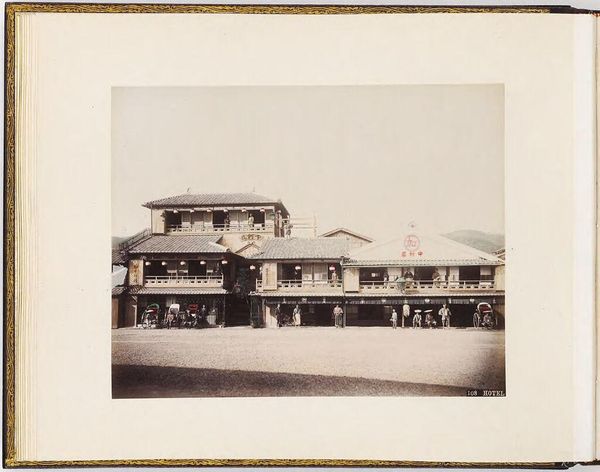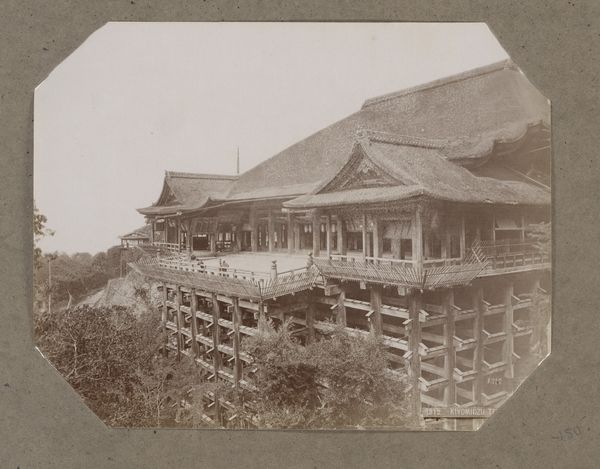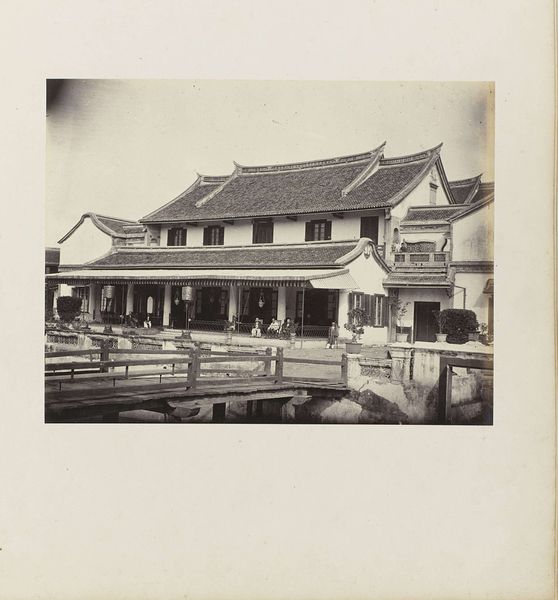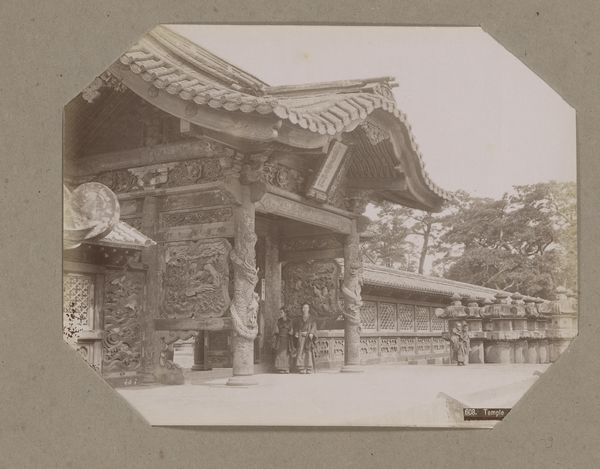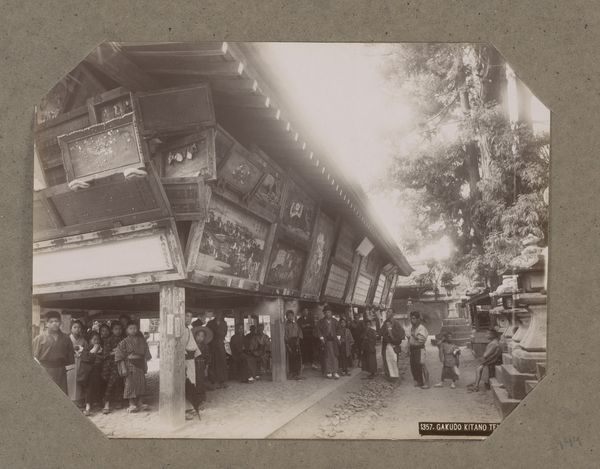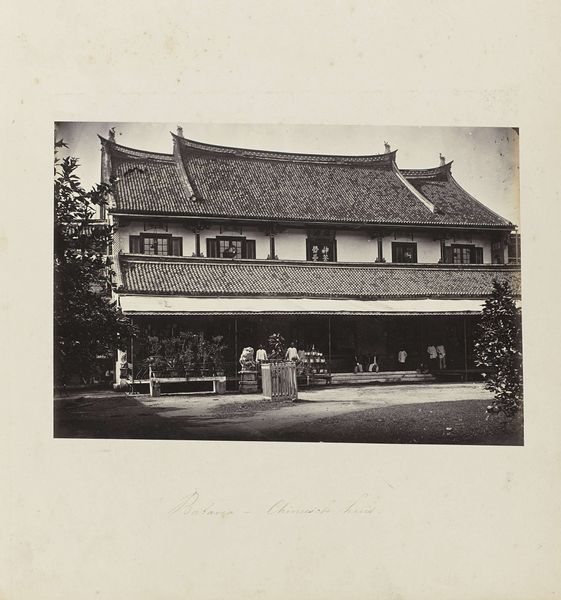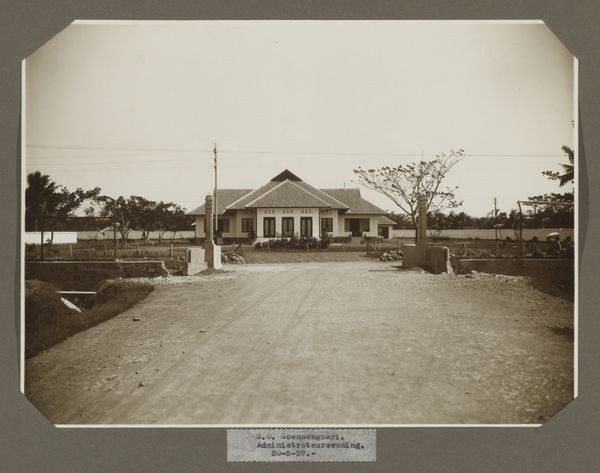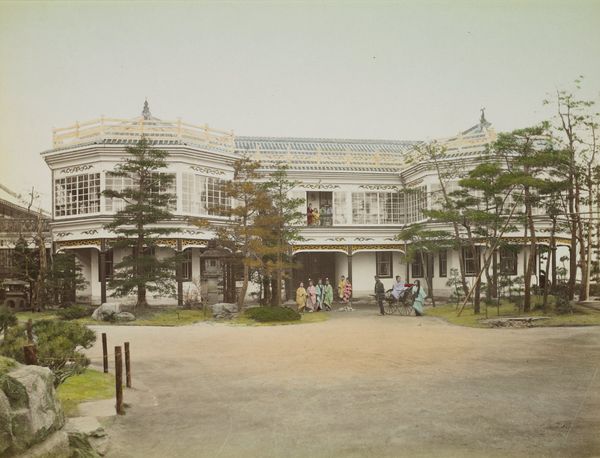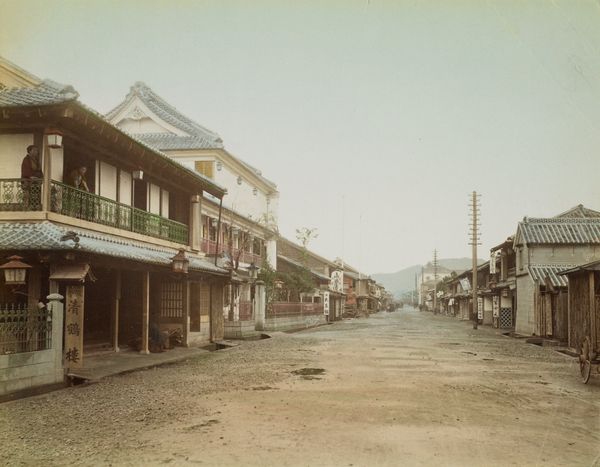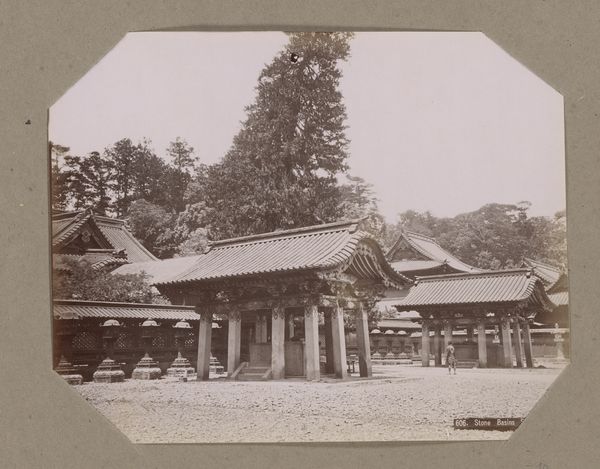
photography
#
urban landscape
#
abandoned
#
asian-art
#
urban cityscape
#
japan
#
traditional architecture
#
photography
#
city scape
#
cityscape
Dimensions: 7 1/2 x 9 1/2 in. (19.05 x 24.13 cm) (sheet)9 x 13 x 1 1/2 in. (22.9 x 33 x 3.8 cm) (album, closed)
Copyright: Public Domain
Curator: This photograph, known as "Untitled," is from the late 19th or early 20th century. It resides here at the Minneapolis Institute of Art. Editor: My first impression is of a stage set. Everything appears meticulously arranged, yet oddly static and impersonal despite the human presence. Curator: The composition indeed feels deliberately constructed. Consider the clear separation of the planes, the focus on line and form over atmospheric depth, and the symmetrical distribution of figures within the architectural space. This lends it a very formal, almost planar quality. Editor: It also highlights the social and economic conditions of the time. The rickshaws suggest a transport system reliant on human labor, while the architecture reflects a particular cultural aesthetic and perhaps class divisions evident in who occupies the balconies versus the street level. Curator: Exactly. And we could delve into the Japonisme movement that saw Western artists incorporate elements of Japanese art into their own works. In reverse, this photograph demonstrates how Japanese photographers also interpreted their surroundings, influenced in some respects by external visions. Editor: How interesting! Thinking about viewers through history—this piece likely confirmed certain orientalist expectations in its original Western audience, reinforcing specific notions about Japanese life and culture. Curator: I appreciate your consideration of that lens! Yet from a purely formal view, I find the photograph striking in its balanced deployment of architectural and human elements; the repetition of the lanterns echoes the groupings of figures below. Editor: True. I remain fascinated by how constructed such a slice of urban life seems—almost artificial, presenting not simply a scene, but perhaps a pre-imagined idea of Japan itself. Curator: Thank you, your comments provide excellent context. I see now this piece operates on multiple layers, historical framing and formal arrangements. Editor: And that intersection is precisely where the photograph holds the most intrigue, offering reflections of time, culture, and seeing, now isn't it?
Comments
No comments
Be the first to comment and join the conversation on the ultimate creative platform.
